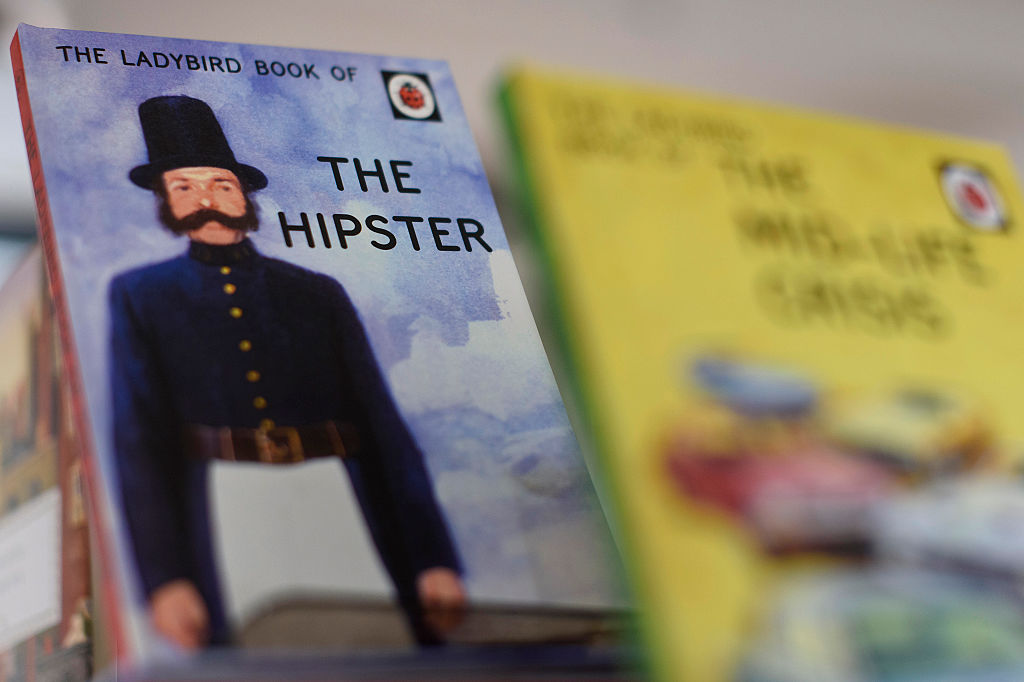Are vintage Ladybird books valuable?
Keep an eye out for vintage Ladybird books at the car boot sale or on online marketplaces like eBay. You could find gold dust between its hard covers


These days you can find Ladybird books exploring everything from the mid-life crisis to hangovers – examples from a spoof series released by Penguin, which bought the publisher in 1998, to capitalise on the nostalgia and resurgent interest in the series of children’s books. There doesn’t yet seem to be a Ladybird Book of Investing. It would be fun to follow the adventures of the original child protagonists, Peter and Jane, as they pore over balance sheets and the latest earnings reports.
Ladybird had its origins in Henry Wills’ bookshop in Loughborough, established in 1867, Michael Wood explains in BBC History Magazine. The first books appeared in 1914, but the golden age of Ladybird spans the years 1940-1975, when the series evolved beyond stories to cover science, history and nature (and, more recently, How it Works: The Wife). “These snapshots of ‘Our Island Story’ are nationalist, white, largely male; kings such as Alfred are noble and merciful, and the empire is still a Good Thing,” says Woods. Naturally, they are a product of their time, he notes, but many of the stories have stuck with us “like myths”.
It was in the early years of this golden age that Ladybird books assumed the pocket-sized format we recognise today. Paper was rationed during the war, but it was discovered that a single piece of paper could be folded into a diminutive 56-page book, perfect for children. Over 100 million copies had been sold by 2016, says Marion Willingham in the Financial Times. Naturally, the rarest examples are the most sought-after by collectors today. Often they are the ones that were the least popular at the time of their printing, Helen Day, a collector of 10,000 titles, tells the paper. One, The Impatient Horse, about “an errant milk float”, sells for around £250. Cinderella, the only Ladybird to come in a dust jacket, fetches about £180 for a first edition.
MoneyWeek
Subscribe to MoneyWeek today and get your first six magazine issues absolutely FREE

Sign up to Money Morning
Don't miss the latest investment and personal finances news, market analysis, plus money-saving tips with our free twice-daily newsletter
Don't miss the latest investment and personal finances news, market analysis, plus money-saving tips with our free twice-daily newsletter
But be careful, warns Day. Ladybird played fast and loose with the rules, so a stated “first edition” may, in fact, be a later version. “First editions” were sometimes completely rewritten and even the illustrations changed, while leaving the original publication date unaltered. “If you’ve picked up an old Peter and Jane book and been bewildered to find Jane in a pair of jeans, this would be why.” Another giveaway is the Ladybird logo – open wings dates the books to the 1940s and 1950s. The “holy grail” of Ladybirds is How it Works: The Computer. Like the Biblical chalice, no one really knows if it ever existed.
Second-hand book shops, car-boot sales and online marketplaces such as eBay are hunting grounds for vintage Ladybirds. Day’s collection has been on tour for the past few years and it is next scheduled to pitch up at Peterborough Museum in the spring if you need inspiration. There is no market for modern Ladybirds. Sadly, that includes the spoof titles. That said, London bookseller Peter Harrington is selling a copy of “the original satirical Ladybird book” We go to the gallery, from 2014, for £1,250. Penguin threatened to sue the publisher, Elia, for infringing on the Ladybird name, so Elia created a new imprint – Dung Beetle Limited.
This article was first published in MoneyWeek's magazine. Enjoy exclusive early access to news, opinion and analysis from our team of financial experts with a MoneyWeek subscription.
Get the latest financial news, insights and expert analysis from our award-winning MoneyWeek team, to help you understand what really matters when it comes to your finances.

-
 Why you fear money – and how to fix it: MoneyWeek Talks
Why you fear money – and how to fix it: MoneyWeek TalksPodcast MoneyWeek's digital editor, Kalpana Fitzpatrick, speaks to financial psychotherapist Vicky Reynal about how to change your money mindset for the better.
-
 How cancelling unused direct debits could boost your pension by £37,000
How cancelling unused direct debits could boost your pension by £37,000A new year refresh of your spending could save you money and help boost your pension pot.
-
 The shape of yields to come
The shape of yields to comeCentral banks are likely to buy up short-term bonds to keep debt costs down for governments
-
 A change in leadership: Is US stock market exceptionalism over?
A change in leadership: Is US stock market exceptionalism over?US stocks trailed the rest of the world in 2025. Is this a sign that a long-overdue shift is underway?
-
 A reckoning is coming for unnecessary investment trusts
A reckoning is coming for unnecessary investment trustsInvestment trusts that don’t use their structural advantages will find it increasingly hard to survive, says Rupert Hargreaves
-
 Luana Lopes Lara: The ballerina who made a billion from prediction markets
Luana Lopes Lara: The ballerina who made a billion from prediction marketsLuana Lopes Lara trained at the Bolshoi, but hung up her ballet shoes when she had the idea of setting up a business in the prediction markets. That paid off
-
 British blue chips offer investors reliable income and growth
British blue chips offer investors reliable income and growthOpinion Ben Russon, portfolio manager and co-head UK equities, ClearBridge Investments, highlights three British blue chips where he'd put his money
-
 Renewable energy funds are stuck between a ROC and a hard place
Renewable energy funds are stuck between a ROC and a hard placeRenewable energy funds were hit hard by the government’s subsidy changes, but they have only themselves to blame for their failure to build trust with investors
-
 Profit from document shredding with Restore
Profit from document shredding with RestoreRestore operates in a niche, but essential market. The business has exciting potential over the coming years, says Rupert Hargreaves
-
 The war dividend – how to invest in defence stocks as the world arms up
The war dividend – how to invest in defence stocks as the world arms upWestern governments are back on a war footing. Investors should be prepared, too, says Jamie Ward